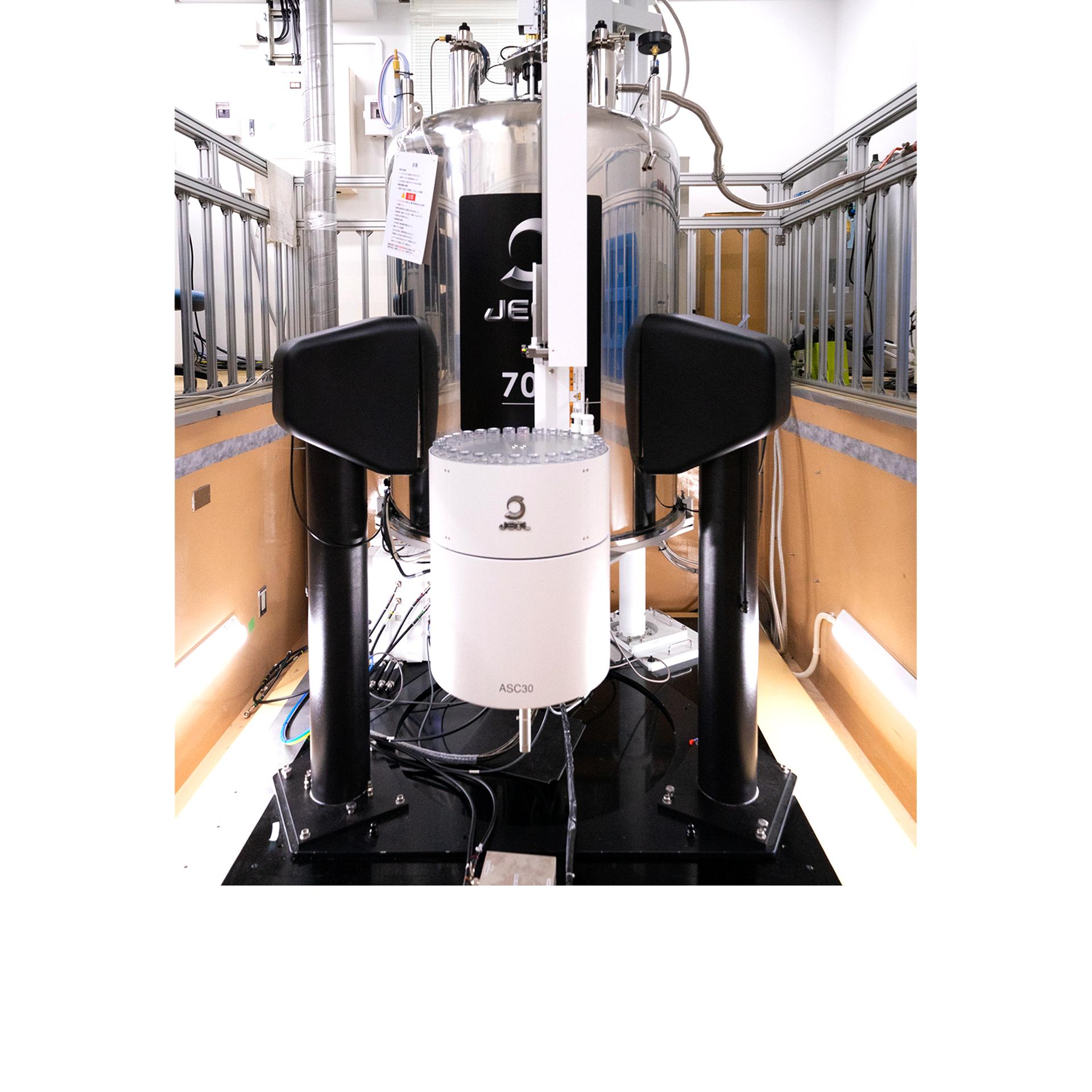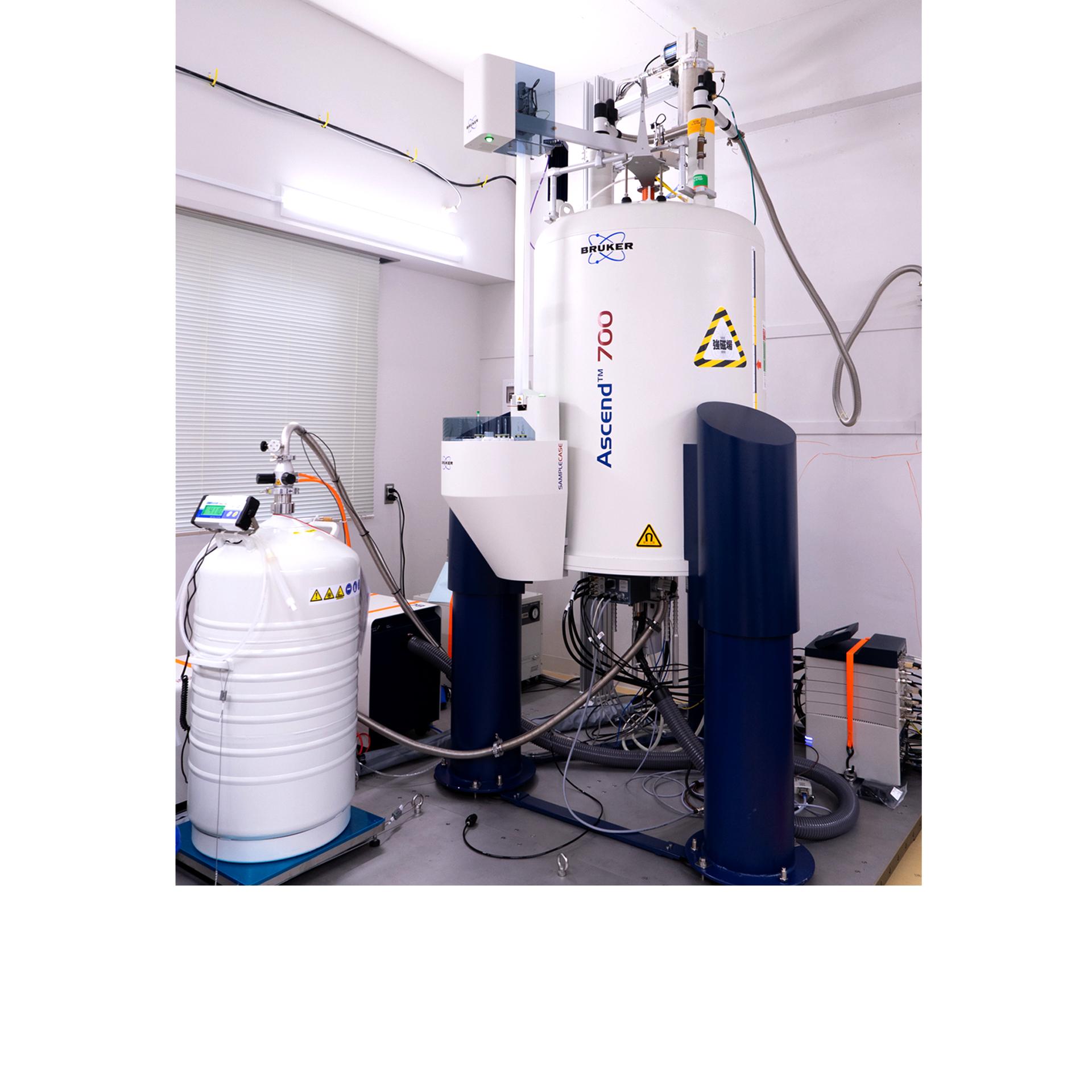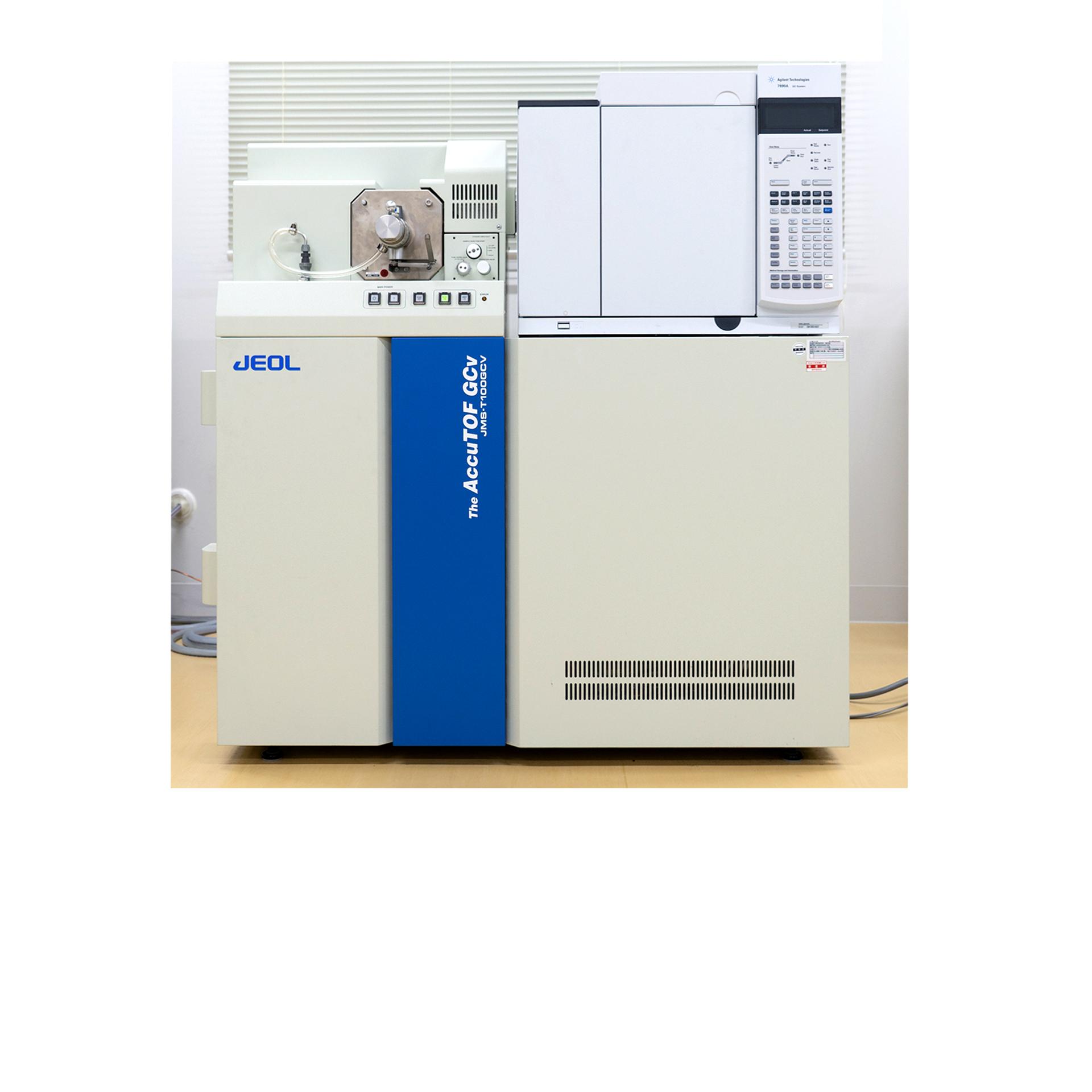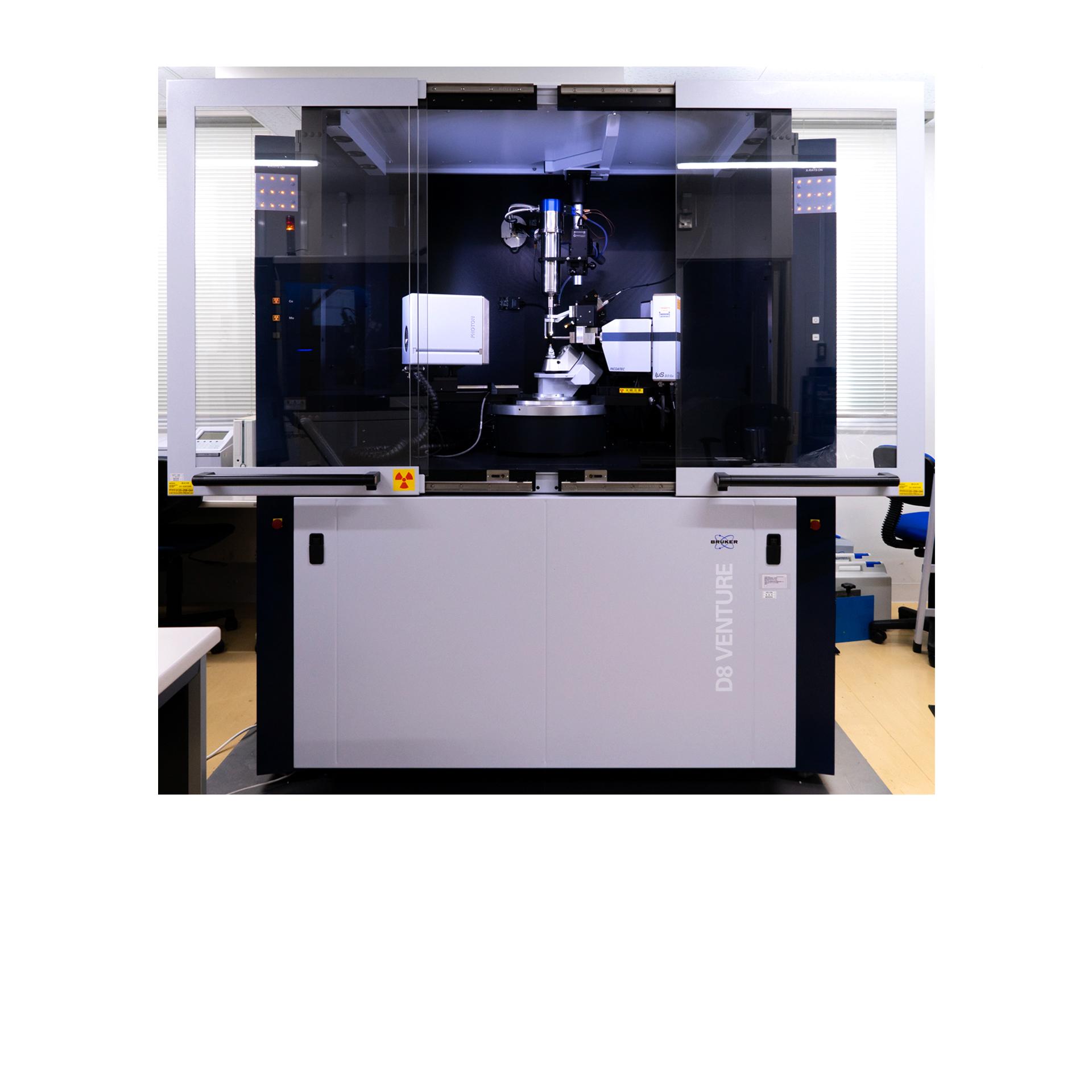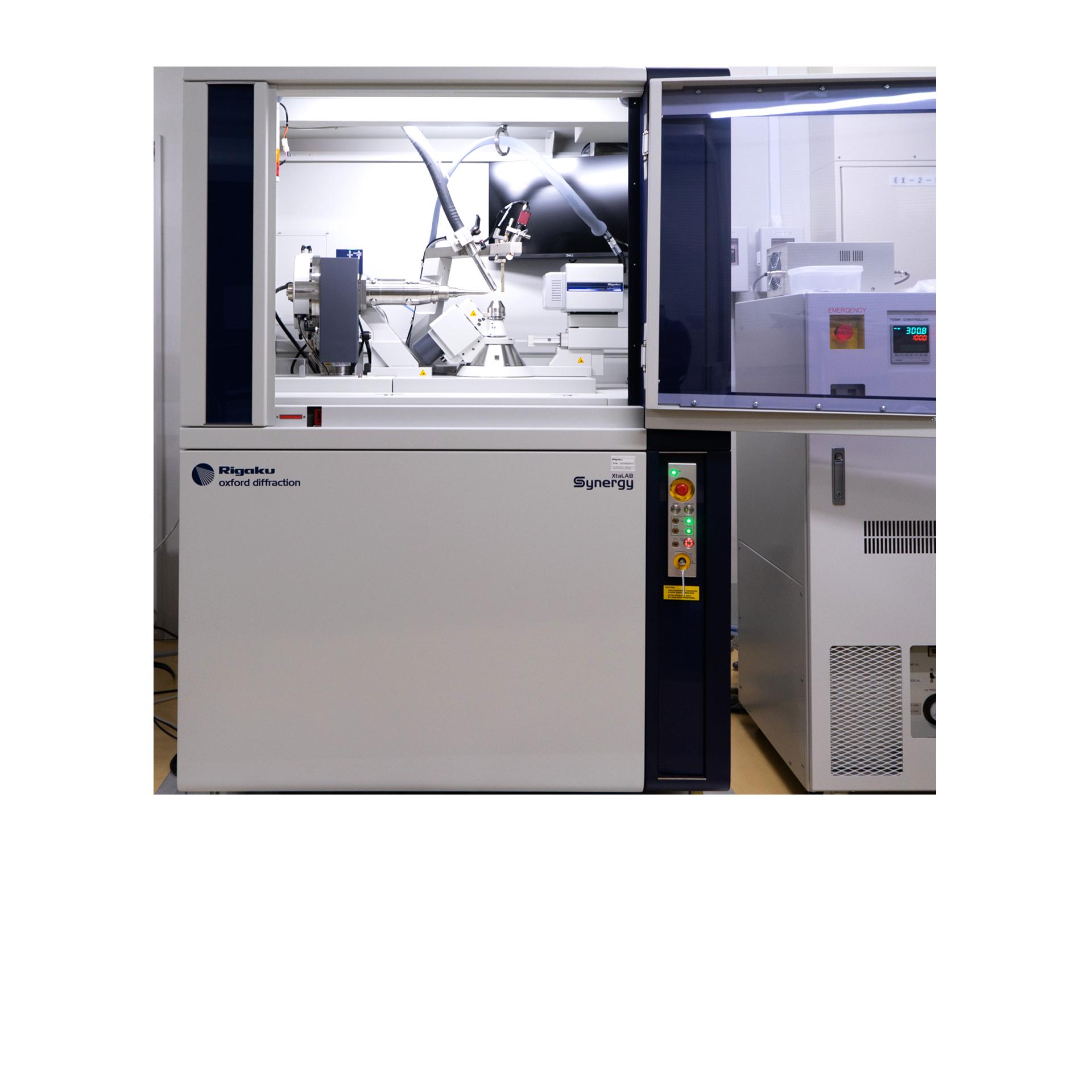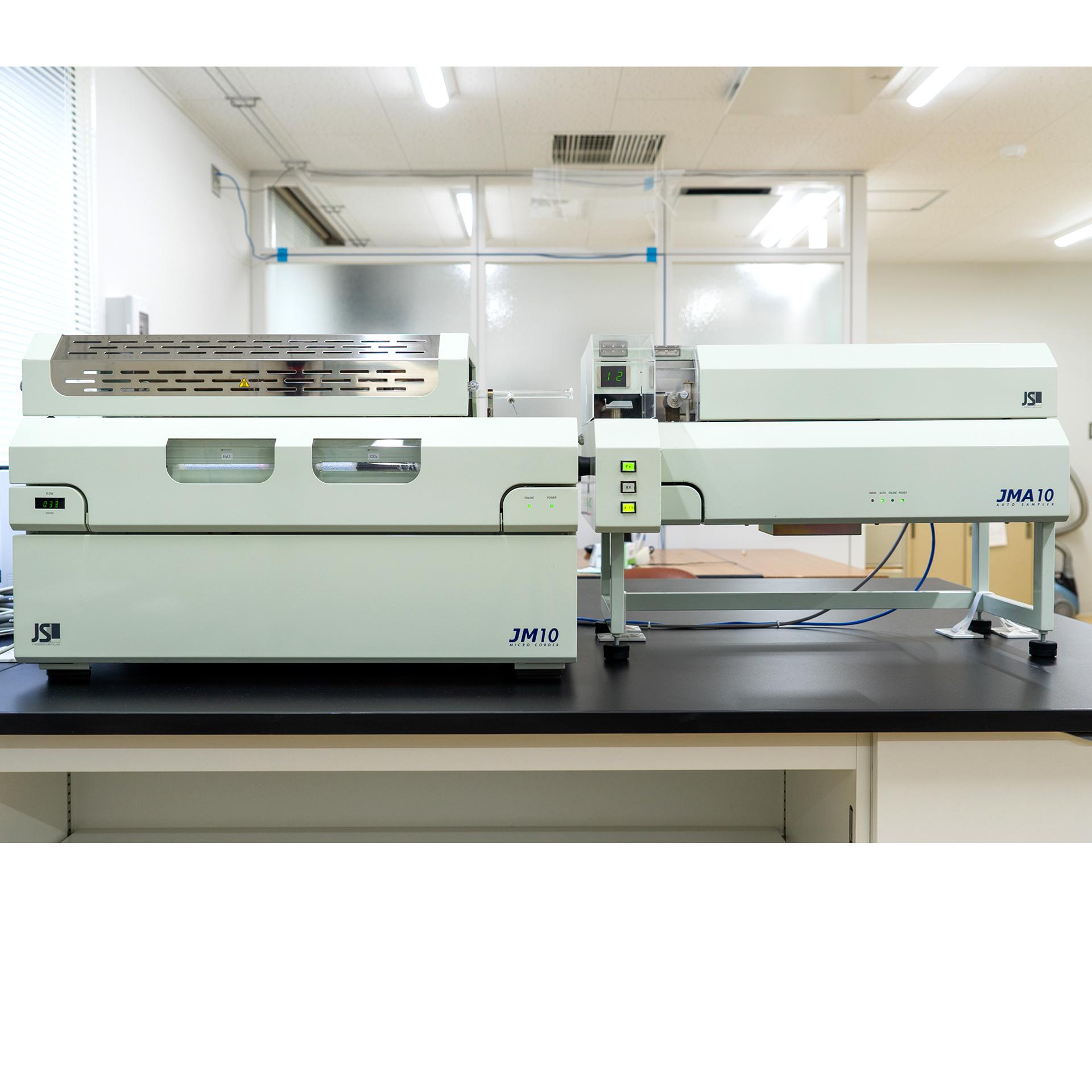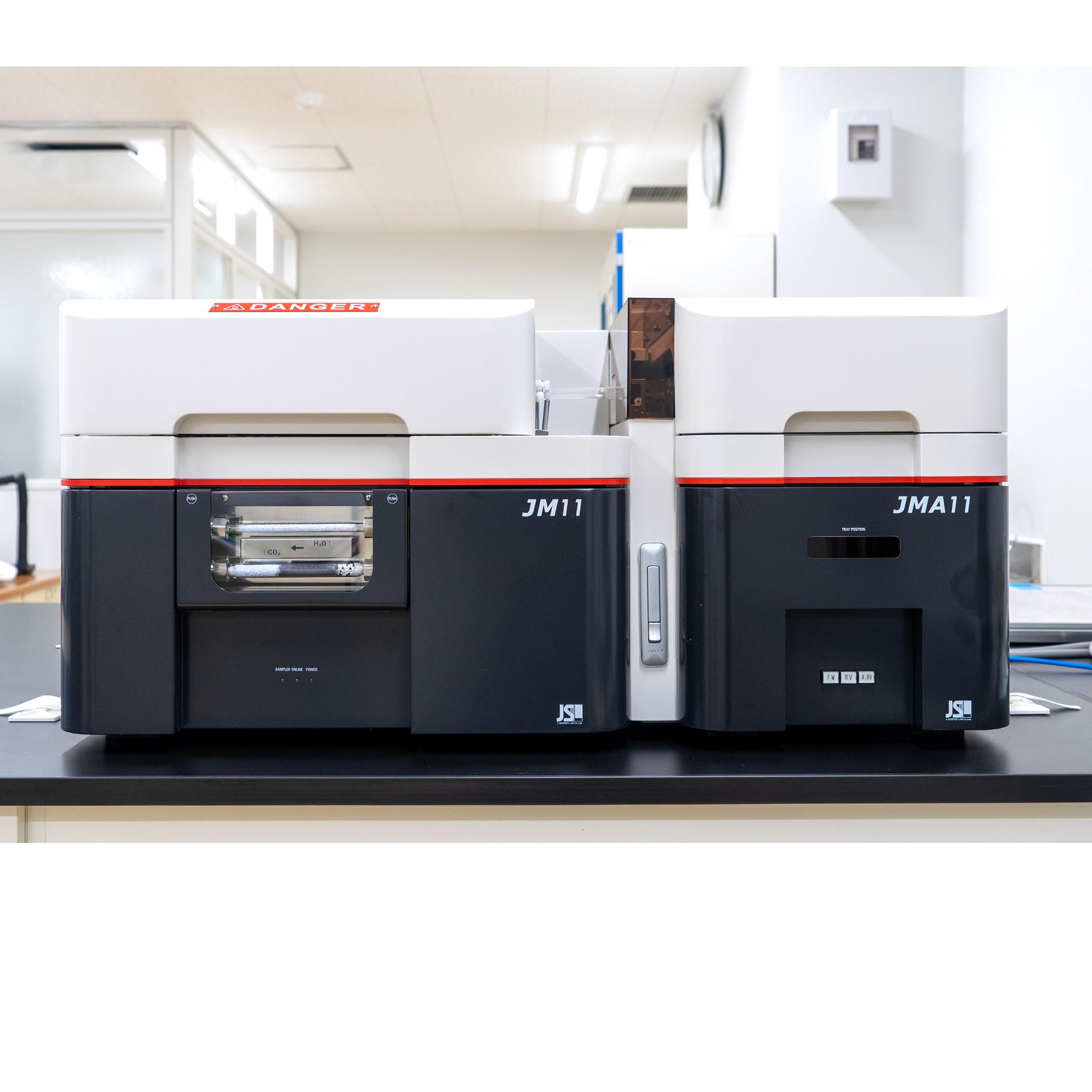About Sections
- Nuclear Magnetic Resonance Analysis
- Mass Analysis
- X-ray Structural Analysis
- CHN Elemental Analysis
- Halogen / Sulfur Analysis
- Plasma Emission Analysis
Nuclear Magnetic Resonance Analysis
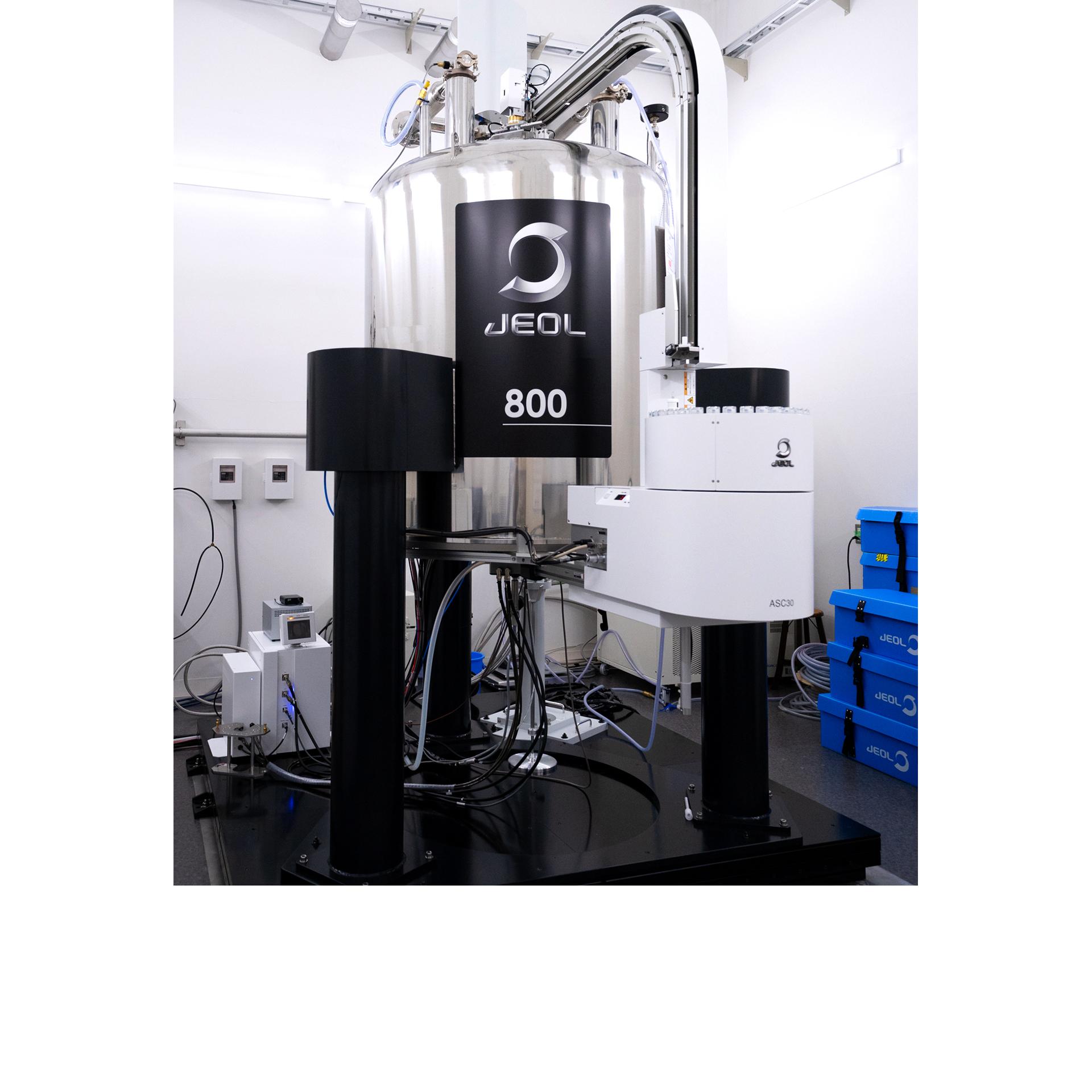
Nuclear magnetic resonance absorption of a sample dissolved in deuterated solvent is measured with high resolving power. The sequences and steric structures of hydrogen and carbon in the compound can be analyzed. One- and two-dimensional measurements are available. This is used for the analysis of the conformation for organic compounds such as chemicals and natural products, as well as physicality research on high polymer compounds.
Mass Analysis
This equipment can determine the molecular weight and composition of a molecule. The sample is ionized and classified by mass-to-charge ratio and mass numbers, with the quantity of ions is precisely measured. A range of methods for ionizing various samples are available. This process of analysis is used to determine and identify the structure of organic compounds.
X-ray Structural Analysis
Three-dimension diffraction spots can be detected by X-irradiating a single crystal. The three-dimensional structure of the crystal is analyzed by its location and intensity. It can determine not only the molecular array of the crystal, but also microstructure (bond length, angular degree, and so forth) of the molecule.
The CCD-X ray (Mo and Cu radiation sources) instrument can measure minute crystals in a short time and analyze giant molecules and unstable molecules.
CHN Elemental Analysis
This instrument measures the amount of carbon, hydrogen, and nitrogen contained in a sample by combusting and resolving powder of liquid samples into H2O, CO2 and N2 gases, and determinig the quantity of each gas using a thermal conductivity detector.
Halogen/Sulfur Analysis
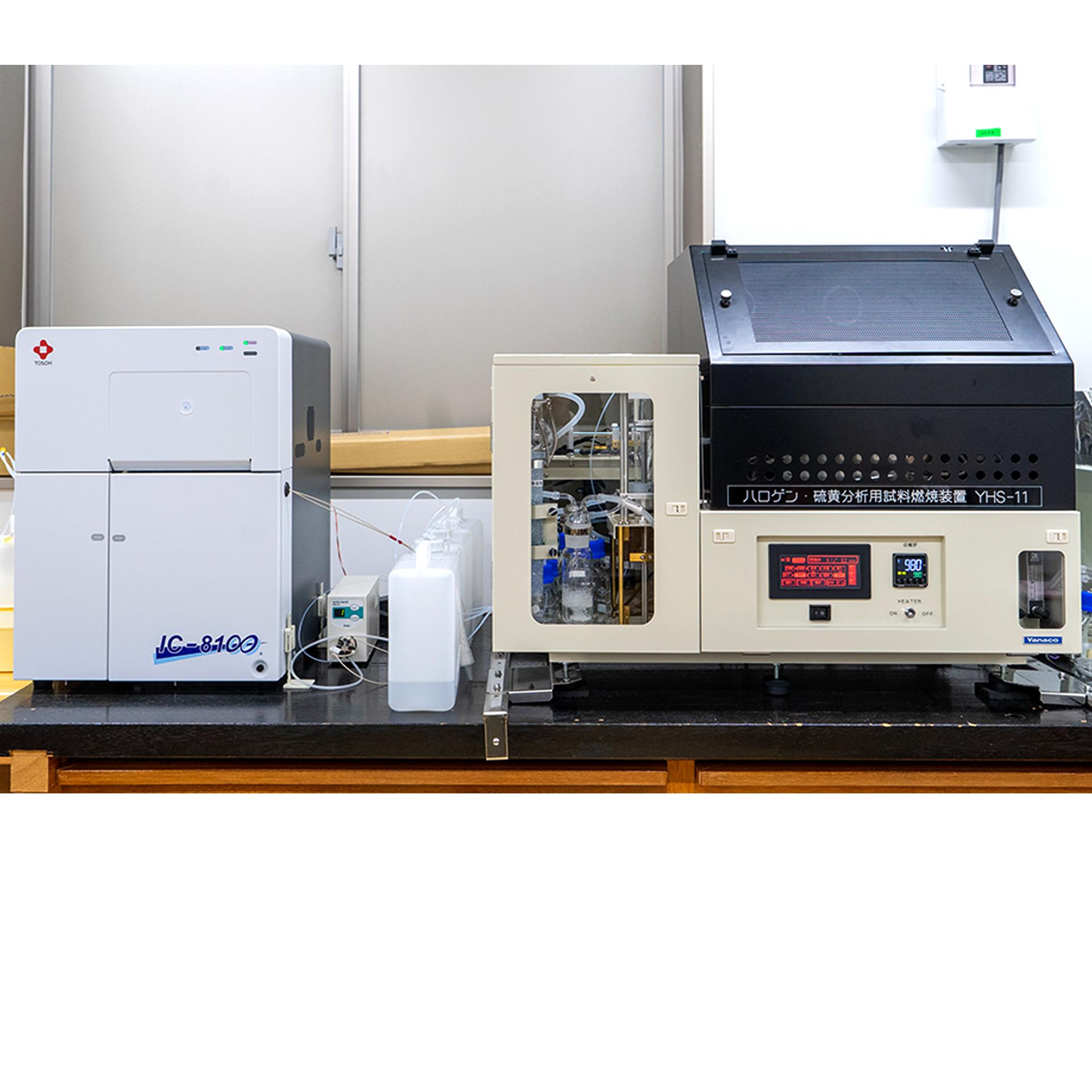
This instrument is used to determine the amount of halogen (fluorine, chlorine, bromine and iodine) and sulfur contained in sample. The sample is combusted and resolved into gaseous elements. These elements are absorbed for detection and measurement by ion chromatography.
Plasma Emission Analysis

This equipment is used to analyze minor components of biological materials, functional materials, environment samples, etc. The sample is sprayed into high-temperature argon plasma. Then, qualitative and quantitative analyses of trace amounts of metallic elements and some non-metallic elements in the sample can be performed by analyzing the wavelength and intensity of the light emitted by the light excited atoms and ions.

